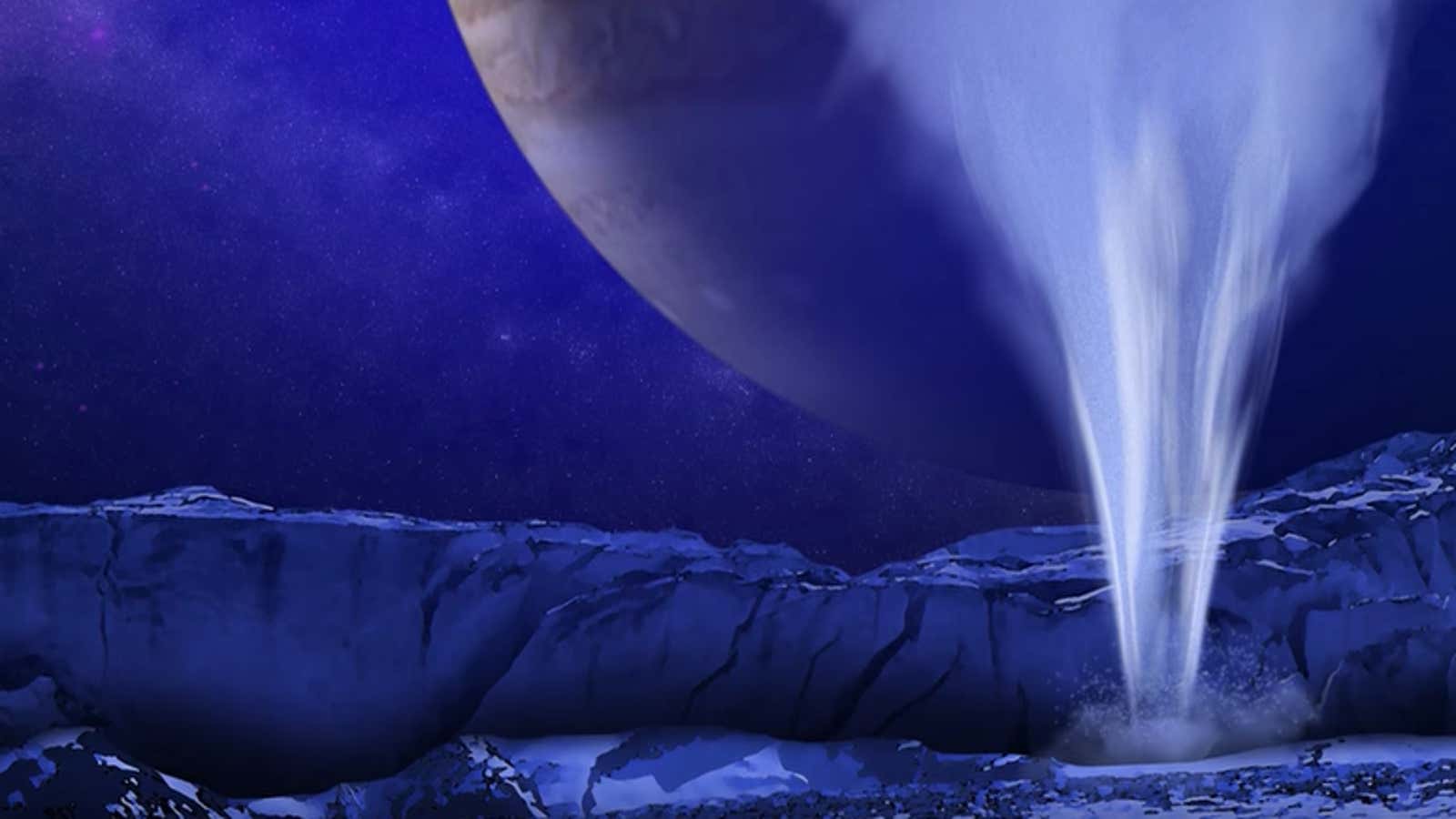The first step to finding aliens is finding water.
Scientists have known that Europa, one of Jupiter’s 67 moons, could be covered in a frozen ocean—suggesting that it could possibly harbor some kind of extraterrestrial life. But it will probably take years to develop the technology needed to remotely drill beneath the surface of that ice.
On Monday (Sept. 26), NASA researchers revealed that they have new evidence to suggest that some of this frozen water is being shot up from the surface of the moon in clouds of water vapor. Astronomers at the Space and Telescope Institute in Baltimore, Maryland used the Hubble telescope to take ultraviolet images of Europa as it crossed Jupiter and noticed what looked like plumes about 125 miles (200 km) above the moon’s surface.
Back in 2012, another group of astronomers from the Southwest Research Institute in San Antonio, Texas found similar evidence by examining how Europa and Jupiter’s magnetic fields interacted using the Hubble telescope. They found an aurora similar to the northern lights seen here on Earth, with light wavelengths they calculated as ”characteristic with the breakup of water molecules,” according to NASA. Their conclusion: water vapor plumes could be erupting from Europa’s surface. The new images back this theory up.
Theoretically, a spacecraft could fly over the moon and collect a sample of the water vapor cloud to more easily look for living things in Europa’s ice. There are some practical issues to be worked out first, though.
“One of the biggest unknowns we have with these putative plumes is understanding their timing,” Curt Niebur, the lead scientist for NASA’s Europa mission told NPR. The eruptions appeared only three out of the 10 times the Hubble took images of Europa crossing Jupiter. Astronomers need to be able to predict when these clouds will appear before they can schedule a mission to fly over one of them to try to take a sample to test them for chemistry.
